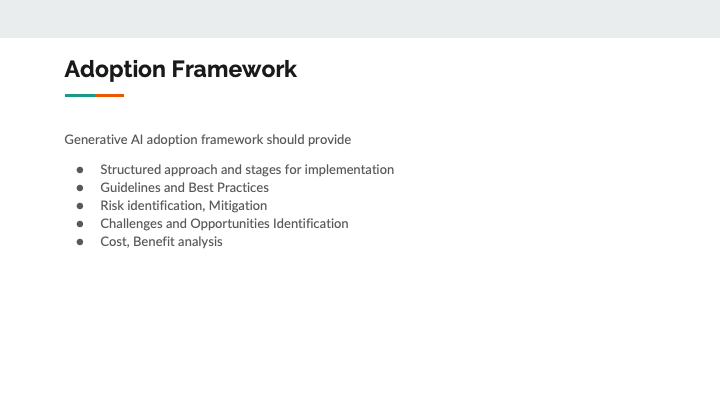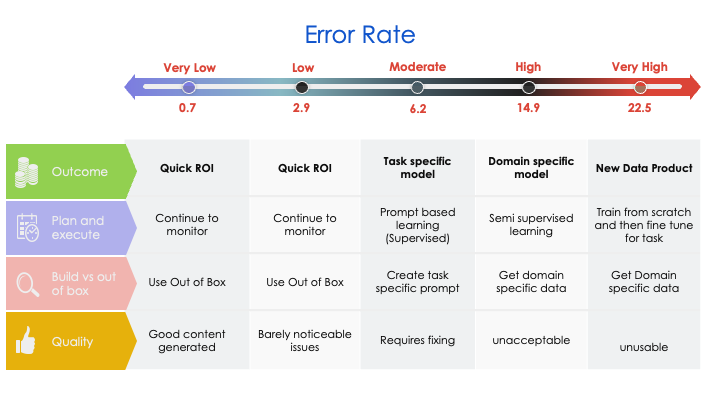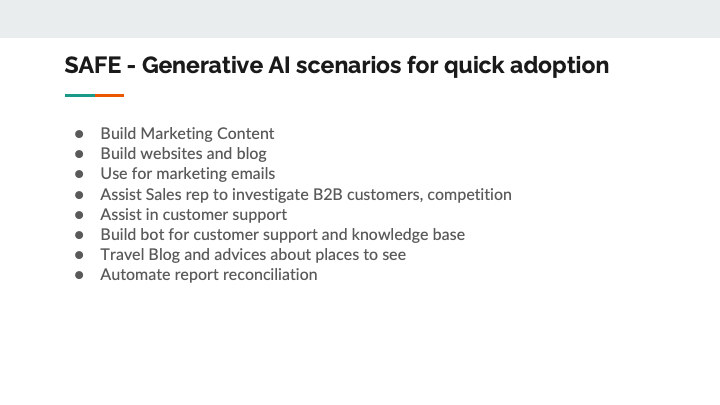Generative AI Adoption Framework Slides
Additional Comments
Adoption Framework for GenAI in Enterprises |
||
|
|
||
|
|
||
|
|
||
|
|
||
|
|
||
|
|
||
|
|
||
|
||
|
Book a workshop to discuss adoption |
||
📩 Email, Text, or CallTo book a workshop, please send an email from your business email address. Email to book workshop: workshop@dataknobs.com You can also:
|
||
4-strategies-for-genai-adopti Adoption-framework-stages Best Practices for Adoption Challenges-of-genai Evaluate-error Evaluate-risk-opportunities Genai-maturity-phases-outcome Genai-maturity-phases Genai-scenarios-for-adoption Genai-threats









